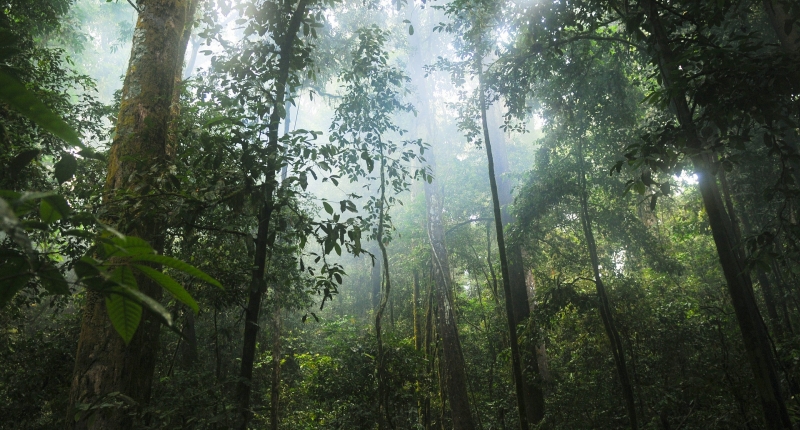How do Temperature and Rainfall Interact to Control Tropical Forest Carbon Cycling?

Tropical forests dominate global terrestrial carbon exchange, but long-term climate variability might affect their ability to uptake and store carbon dioxide. To better understand tropical forest carbon dynamics, the Tropical Nutrient Limitation Working Group assembled published datasets to determine how temperature and rainfall interact to control carbon cycling in tropical forests. Their results are featured in a recent Ecology Letters publication.
The researchers found that high rainfall slowed rates of carbon cycling in cool forests (< 20 °C), but it enhanced both aboveground net primary production (ANPP) and decomposition in warm tropical forests (> 20 °C). Previous reports state that ANPP declines with rainfall, but the working group’s analysis revealed that ANPP increases with rainfall at relatively warm sites.
Overall, their results demonstrate that the interaction between temperature and rainfall is essential to understanding climate controls over both plant productivity and decomposition. These findings alter expectations for how forest regions may respond to projected long-term changes in warming and rainfall, with high precipitation accelerating rates of carbon exchange with the atmosphere in the most productive biome on earth.
---
Temperature and rainfall interact to control carbon cycling in tropical forests
Taylor, P.G., Cleveland, C.C., Wieder, W.R., Sullivan, B.W., Doughty, C.E., Dobrowski, S.Z., Townsend, A.R. Ecology Letters, April 2017, doi: 10.1111/ele.12765
